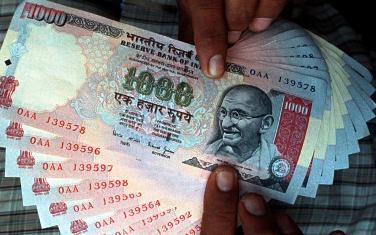
It is a paradox economists are unable to explain. Consider this: India's exports in September 2011 grew by 36 per cent as against exports during September 2010.
If you thought September 2011 was an exception, ponder this: Exports for the first six months beginning April 2011 recorded a robust 50 per cent increase when compared to the same period last year.
Naturally this has made analysts question the Indian 'export miracle' of the past year or so.
First, if exports had indeed recorded such robust growth, what about the performance of core industries? After all, if we have done exceedingly well in exports, our core industries too should have done equally well, if not better.
. . .

And this is where things get murkier. According to the data published by the Union commerce ministry, the growth of core industries for the first six months of this fiscal was a tepid 4.9 per cent, with sectors such as coal and natural gas even recording negative growth.
But what if India is recording a boom in export of services? After all, when you witness a boom in software exports, surely coal and natural gas need not record a parallel increase in their consumption. But, unfortunately, that logic does not hold water as we are talking of exports of physical goods and not of services. Surely, something is seriously amiss.
What has added fuel to this debate is a recent report by Kotak Securities suggesting that probably much of this export boom could be fictitious exports from India which, in turn, facilitate the return of our illicit wealth parked in tax havens back into India.
Naturally questions arise. If during the past six decades Indian businessman were guilty of over-estimating imports (and thereby parking the excess in tax havens), are they guilty of overestimating exports now?
. . .
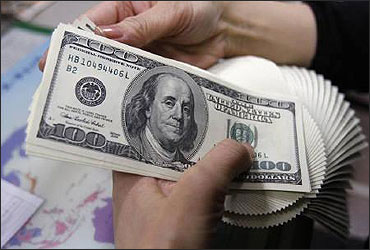
And, in the process, is the illicit wealth of Indians accumulated and parked in tax havens for over six decades stealthily making its way into India?
The authors of the report have backed their theory with interesting empirical data. For instance, they state: "Our study of exports data of major engineering companies (including automobiles and metals) shows that the increase in their exports does not reconcile with the steep increase in official exports data. In fact, the gap is quite substantial."
In fact, their analysis about this 'substantial gap' is indeed stunning. While engineering exports recorded a near 80 per cent increase in 2010-11, the fact remains that the increase in engineering exports by India's top companies (listed on India's stock exchanges) recorded a mere 11 per cent growth, implying the balance 60-odd per cent increase came from India's small engineering companies.
And in value terms, exports by small companies aggregates to approximately $28 billion!
. . .

Whatever it be, the recent export boom in India deserves some detailed explanation from the government, if not some serious investigation.
If exports are booming, why is the Rupee depreciating?
Swaminathan S. Anklesaria Aiyar, one of India's foremost and most respected economists, too expressed similar views in his column in The Economic Times (dated October 16, 2011) titled, 'Is the export boom really black money?'
Aiyar concludes by stating, "So the export boom remains a puzzle. We need an urgent, detailed investigation of Kotak Securities' research findings by the tax authorities, RBI and the commerce ministry. Even if they come up with a perfectly innocent explanation -- which sounds a stretch -- we need the details to improve our understanding of what's driving exports."
However, Aiyar the economist has a different take on the issue of over-invoicing of exports and discounts the same on account of taxes. According to him, "But if crooks want to bring back this black money, it makes no sense to do so through over-invoiced exports -- the inflated export value would be fully taxable."
. . .
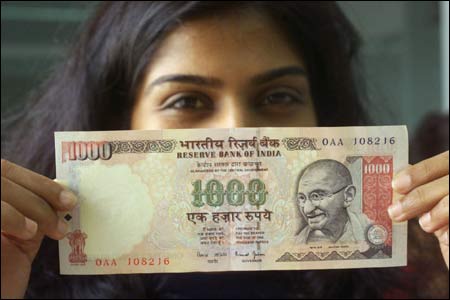
Nevertheless, he misses a crucial point. Such exports are taxed if and only if they are exported from the domestic tariff area.
What if such 'exports' are routed through Special Economic Zones (SEZs) which offer a tax holiday on profits from such exports? Of course, there are checks and balances embedded in the system to prevent such spurious exports. Nevertheless Aiyar would know that, for a price, these things can be easily managed in India.
In fact, thanks to liberalised rules and a lax system, SEZs offer an easy route to launder money and evade taxes. The Noida SEZ is notorious for this as quite a few cases of money laundering and tax evasion have been reported.
No wonder, SEZs in India offer a brilliant escape route to launder money while simultaneously avoid taxes.
. . .
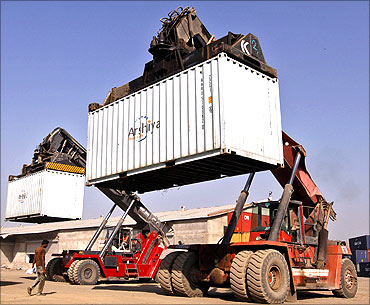
While the export data from SEZs in India for 2010-11 and for the first six months of the current year is not yet officially available, the fact remains that by 2009-10, exports from SEZs accounted for Rs 220,000 crore (Rs 2,200 billion) when compared to Rs 100,000 crore (Rs 1,000 billion) in 2008-09 -- an increase of 120 per cent. (Source: www.sezindia.nic.in)
Remember, that this data pertains to 2009-10 when there was no 'export boom' from India. When data for 2009-10 and 2010-11 emerges, one is certain that we would be in for more surprises.
Similarly, on the capital flow front, the Kotak report suggests that while the foreign investor flow into India aggregated to $22 billion officially for the year 2010-11, the fact is that international sources are not able to place it beyond $5 billion. Obviously, $18 billion is 'unexplained'.
Whatever it be, official or unofficial, reconciled or otherwise, fictional or real, there is a huge dollar flow into India. If dollar supply is increasing, elementary economics dictates that its value must fall, not rise.
. . .
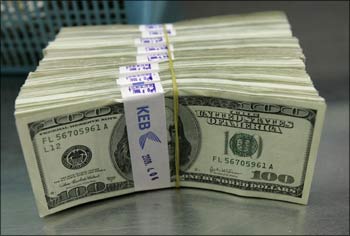
What is more ironical is the fact that the United States economy is facing increasing prospects of another bout of recession shortly. And remember this comes on top of downgrading of the US dollar in August this year by Standard and Poor's.
So fundamentally too, the dollar is weakening against major currencies.
But that takes us to a basic question -- if exports are booming, capital flows are robust and dollar fundamentally weak, why then is the Indian Rupee depreciating?
Who benefits from Rupee depreciation?
Who benefits from all these and who losses? Crucially, is the government unaware of all this?
. . .
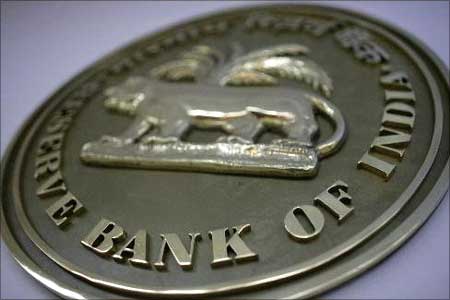
To understand this, reference to the spiralling international crude prices and parallel increase in petrol prices in India is inevitable.
Increase in crude prices implies a weak dollar. That, in turn, means higher crude cost in Rupee terms. The only way to neutralise the increased crude prices (in dollar terms) is to ensure equivalent appreciation of the Rupee.
Such an appreciation would mean little or no increase in crude cost in Rupee terms.
Take the petrol price hikes effectuated by the oil marketing companies over the past several months. While the first few were on account of increase in international crude prices, the latest one effectuated last week was on account of depreciating Rupee and had nothing to do with international crude prices!
. . .
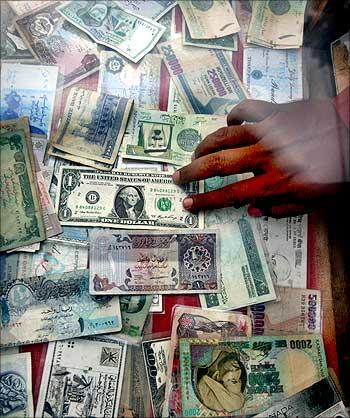
In short, a weakening Rupee is a double whammy in the backdrop of spiralling international crude prices for the average Indian. More specifically, to neutralise the spiralling crude prices, the government and the Reserve Bank of India must allow the Rupee to appreciate.
In contrast to the textbook prescription seeking appreciation of the Rupee to counter inflation, the government strangely allowed the Rupee to depreciate by approximately 10 per cent between July 2011 and now.
This is all the more inexplicable considering the fact that we had good supply of the dollar -- both on current and capital account.
Naturally, a weak Rupee coupled with spiralling petrol prices has the calculated effect of triggering inflation. And inflation hits every Indian. So a depreciating Rupee is a disaster, especially in present context where crude prices are rising and the US dollar is weak.
. . .
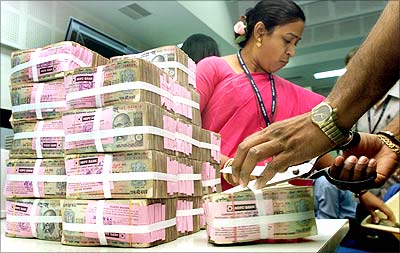
But what about Indian exporters? Probably they are gainers in this scenario of a weak rupee. Surely the topline increases when someone gets Rs 50 instead of 45. But overall, inflation increase as explained above neutralises their profitability; perhaps erodes it. Little do our exporters realise the fallacy of a weak Rupee. It is an illusion at best.
But the question remains: who are the gainers from all these economic policies of SEZs, weakening Rupee, tax breaks and, of course, foreign investments?
It does not need a seer to analyse that it would be fictitious exporters and shady foreign investors who are beneficiaries of all these.
Needless to emphasise, only those who could manipulate the RBI and by extension the value of the Rupee would undertake fictional exports while encouraging policies relating to SEZs.
. . .
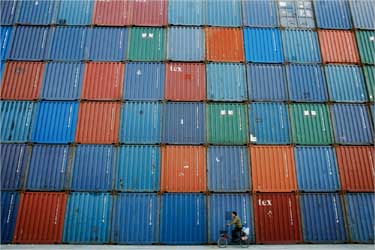
And that is possible only by someone who controls the entire government machinery!
Bewildered? Remember, while there is no economic rationale or theoretical explanation for the depreciation of Rupee, the fact remains that the government has allowed the Rupee to depreciate.
Why? The answer is obvious. Let us not forget all these economic policies are well integrated and intertwined with each other wherein our political masters have enormous personal economic interest.
And till they have such varied economic interests, none of these policies will benefit the common man. Neither can be rationalised by economists. Time we understand this.
The author is a Chennai-based chartered accountant. Comments can be sent to mrv@mrv.net.in